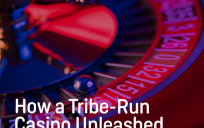If you’re like me, you’re still recovering from and trying to absorb and sort all the content shared during Social Media Week last week. There was so much information and so many ideas presented at each session that I found myself consistently over-stimulated, but in an exciting way. As I wait for all of the ideas to gel, I wanted to say something about all of the topics touched upon and items learned.

Here are three of my take-aways from Social Media Week:
1. QR Codes and Non-Profits: The commercial world seems to have written off the utility of QR Codes for their simplicity, lack of flexibility, and inability to facilitate instant sales. But this technology should be viewed as potentially highly successful for non-profits if used correctly. Here are the ingredients:
Responsive design website OR mobile site
Mobile friendly donation landing pages
Print collateral for events
Advertising budget for signage
Here’s the recipe: Once you’ve ensured your donation landing pages and other links to your website are optimized for mobile, incorporate QR codes linking to those pages into print materials and collateral for events, fundraisers, and advertising signage. Then, rather than handing out excessive pieces of paper that may be tossed before reading, you can provide QR Codes on smaller documents, giving your constituents access to information on the go and the ability to contribute on their way home from your successful event.
2. Test the Waters: Whether you’re an expert in the field (Facebook itself, Edelman, etc.) or relatively new to social media (many Government agencies, for example) the theme that resonated last week was that it is ok for your brand to test the waters in real time, in public.
This idea first came up during the NPR session on February 19th, when presenters indicated that NPR’s Google+ page, use of a platform called rebelmouse, and other efforts were simply tests—they were put out there by staff to test the power and utility of a social media platform. These experiments were tests to figure out which platforms would perform better or worse as conveyers of NPR and their partners’ content.
NPR was not the only brand discussing live testing of platforms. Everyone from Ogilvy to AARP to museum and product representatives admitted to testing various platforms and letting go of activity on those that seemed to fail. The communities on various platforms will accept the test, and you will know if those communities miss you or didn’t really find your content engaging in the first place.
3. Google+: There was a lot of love in every room for Facebook and Twitter, and shout-outs to Tumblr, podcasts, YouTube, and other tools and channels. But when it came to discussions of Google+, most presenters and audience members tended to laugh. Some believe Facebook makes Google+ redundant, while others (especially agencies and large brands) use it to maintain circles and promote endless amounts of content. But the overall sense that I got from workshop after workshop was that people recognize the necessity of participating in Google+ for SEO purposes, but otherwise do not really seem to like it, understand it, or care to engage with it. Sorry Google!




Leave a Reply
You must be logged in to post a comment.